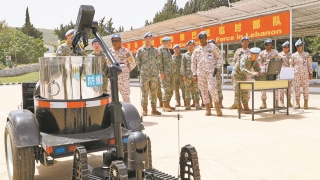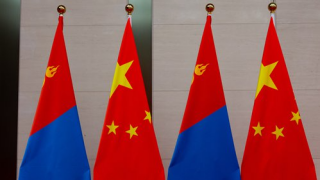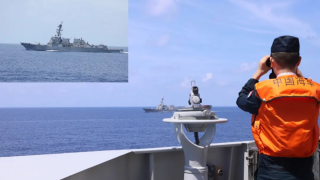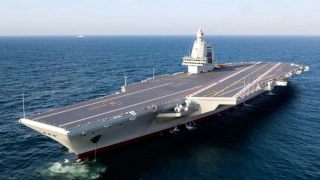By Da Zhigang
In the context that Japanese Defense Minister Kihara Minoru went to Hawaii for the series of bilateral and multilateral talks with the defense ministers of the US, Australia and the Philippines, the military component of the Japanese government's recent diplomatic activities has significantly increased. Compared with Japan's economy-focused diplomacy in the past, it has obviously given more emphasis to military diplomacy since Fumio Kishida came to power. Japan has continuously strengthened its military alliance with the US, signed a Reciprocal Access Agreement (RAA)with Australia and the UK respectively, and is said to be signing the RAA with the Philippines soon. Japan is willing to accept NATO to set up a liaison office in Tokyo and plans to join the related projects of the "second pillar" of the AUKUS alliance. Japan is also expanding multilateral paramilitary alliances at multilateral levels, such as those among the US, Japan, the ROK, and those among the US, Japan, Australia, and the Philippines, etc. All these reflect its trend in increasing military diplomacy.
Although there are many noises from right-wing forces in Japan, for most of the time since the end of World War II, Japan has generally been able to pursue a peaceful development path with the exclusively defense-oriented policy as the bottom line, and its diplomacy has mostly focused on serving economic and trade development. However, why has Japan gradually accelerated the pace of military diplomacy in recent years, and what impact will this bring?
First, the urge to break free from postwar constraints developed from undercurrent to an outright attempt. From the end of World War II to the Cold War, Japan relied on the military protection of the US and rapidly developed into the world's second largest economic power. However, it was also faced with the difficulty of matching its political influence with its economic strength. Entering the post-Cold War period, some Japanese cabinets have stepped up the pace of so-called national normalization to break away from post-war shackles. The impulse of a military power hidden in conservative consciousness has become increasingly stronger. During Shinzo Abe's second term, he even introduced a policy that can be said to bid farewell to post-war shackles. The so-called Legislation for Peace and Security partially lifted the constraint on the right to collective self-defense in response to surrounding events. The Kishida cabinet inherited Abe's diplomatic and security legacy to a large extent. It not only revised the three national security documents and added offensive clauses to build counterattack capabilities, but also gradually shifted the focus of diplomacy to the military diplomacy aimed at improving actual combat capabilities and military deterrence.
Second, the external environment is regarded by the Japanese government as a rare opportunity and is greatly exploited. In recent years, Japan's official documents such as the Diplomatic Bluebook and the Defense of Japan (Annual White Paper) have continuously described the increasingly complex changes in the geopolitical environment as a "security threat" to Japan. The US-led acts of stirring up the situation in the South China Sea and, the situation on the Taiwan Strait and even the ongoing conflict between Russia and Ukraine have become an excuse for Japan to expand its military and prepare for war in the name of "national security." Japan has taken the opportunity to increase military and security cooperation with its allies and quasi-allies and has gradually broken the restrictions by exporting military equipment to other countries and providing so-called security capabilities to some small and medium-sized countries. At the same time, increasing military diplomacy has also brought more illusions to Japan's constitutional amendment to speed up the militarization of the Japan Self-Defense Forces (JSDF). Recently, Kishida has also emphasized that he hopes to achieve constitutional amendment during his tenure as president of the Liberal Democratic Party (LDP).
Furthermore, Japan has an obvious intention to achieve a "dual-wheel drive" of both economy and military in diplomacy. In the process of tilting from economic diplomacy, which was more pragmatic in the past, to military diplomacy, Japan has not given up the advantages accumulated over the years in economic diplomacy. Instead, it is trying to create a dual-wheel approach of serving military diplomacy with economic diplomacy and integrating economic elements into military diplomacy. From the Official Development Assistance (ODA) to Official Security Assistance (OSA), Japan has labeled more scientific and technological patents and digital technologies as "economic security" and invested limited funds in arms race. All these acts demonstrated the two-wheel strategy of the Japanese diplomacy.
Shifting from economic diplomacy to a dual-wheel drive of economic and military diplomacy and trying to make up for the shortcomings that hinder the development of military diplomacy will not only make Japan's peaceful development path face greater variables, but will also bring more dangers to Northeast Asia and even the entire Asia-Pacific region.
(The author is a researcher at the Institute of Northeast Asian Studies and chief specialist at the Northeast Asia Strategic Research Institute, Heilongjiang Provincial Academy of Social Sciences.)
Editor's note: Originally published on huanqiu.com, this article is translated from Chinese into English and edited by the China Military Online. The information and opinions in this article do not necessarily reflect the views of eng.chinamil.com.cn.









